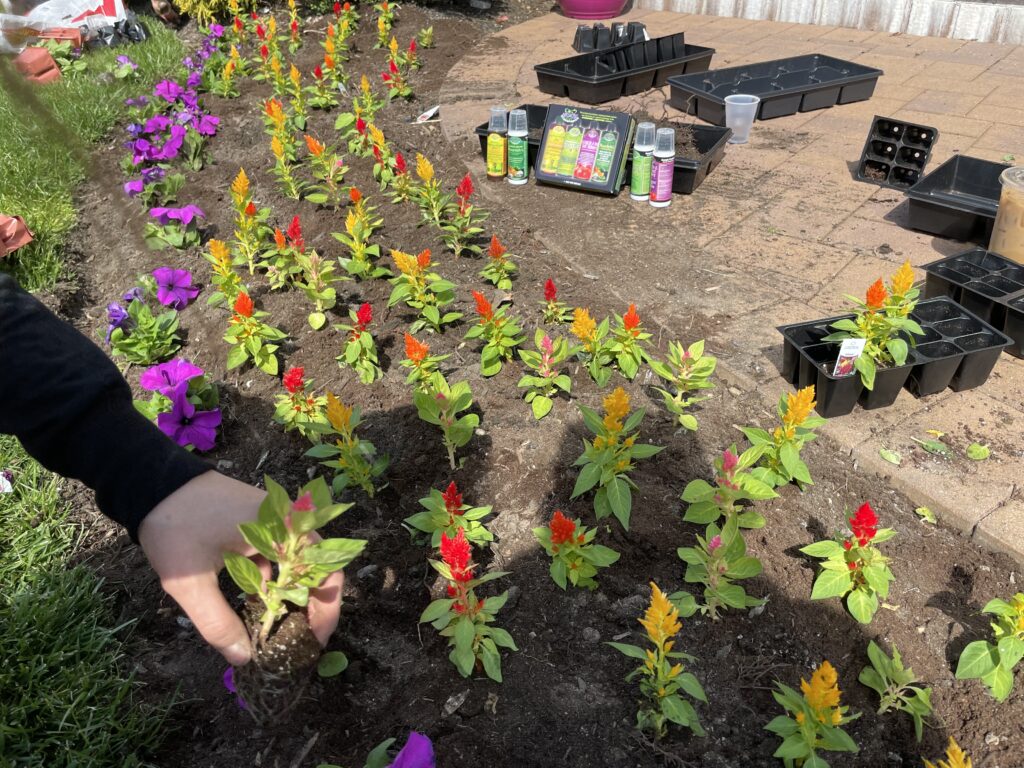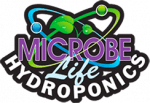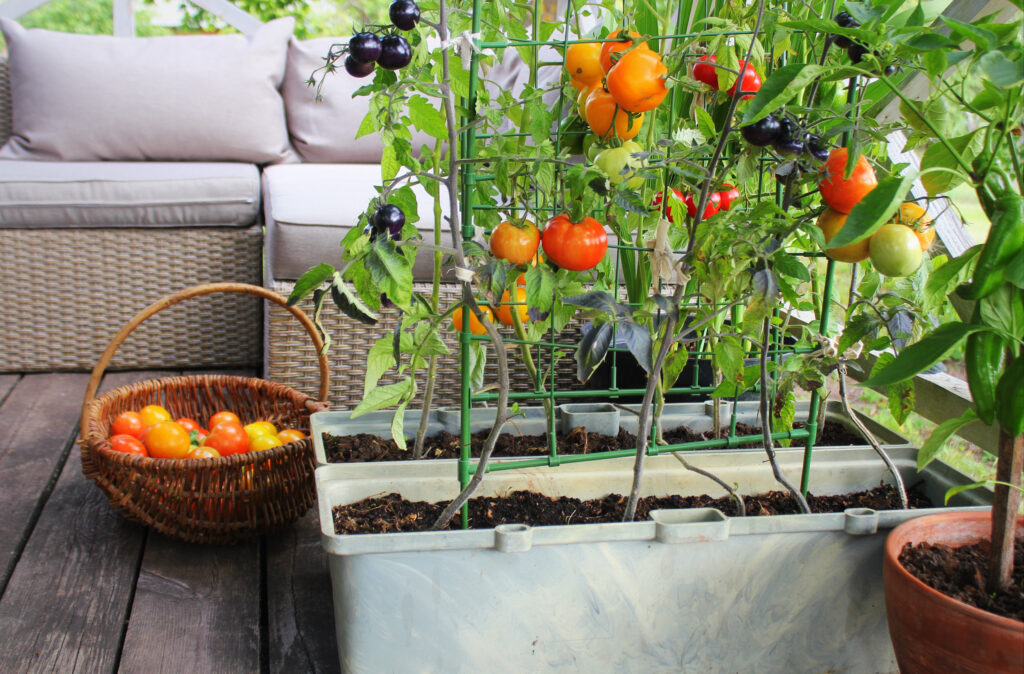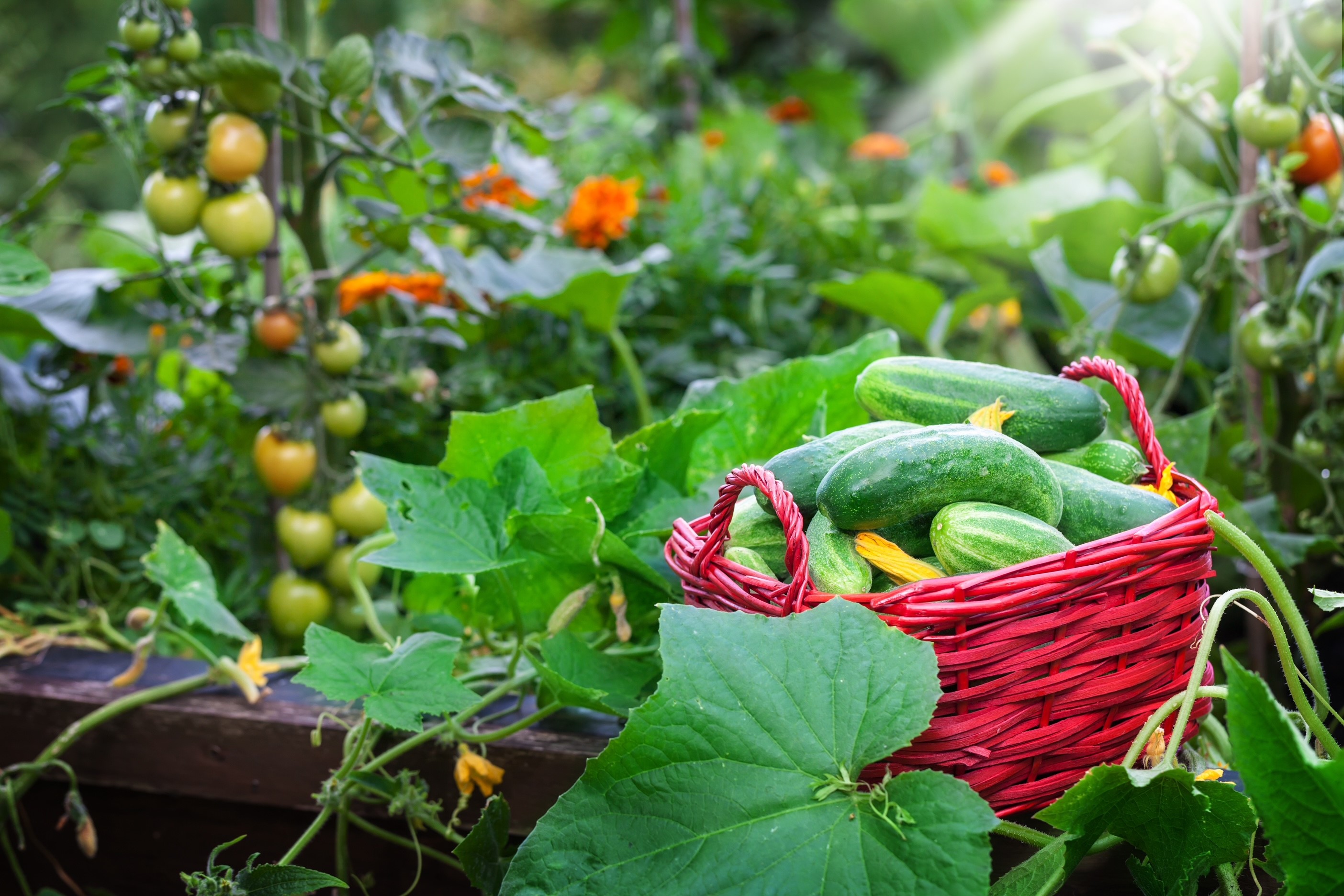
06 Jun A Guide to Raised-Bed and Container Gardening
The growing season is in full swing, and gardening enthusiasts everywhere are tending their beds in anticipation of a bountiful harvest.
But what if you don’t have perfect soil or enough space to establish a traditional garden?
Not to worry! Raised beds and container gardens are an excellent alternative and can produce all the fruits, veggies, and flowers you love without digging up your backyard.
Raised bed and container gardens are a time-honored tradition in urban settings and can help even the most time and space-challenged gardeners achieve incredible yields even on their first attempt.
Some of the benefits of container gardening and raised beds include:
- Grow food and flowers in non-traditional spaces or the absence of a garden
- Get started earlier in the year
- More productive gardens and bountiful harvest
- Better quality soil
- Low maintenance as weeds are easier to control
- Easier to keep pests away
- Gentler on your back and knees
- Grow more in less space
If you’ve been thinking about planting raised beds or container gardens, we’ve got some helpful information to get you started on the right foot. Let’s dig in!
What Are Raised Bed and Container Gardening?
Raised bed and container gardening address issues that prevent you from planting or tending an in-ground garden. If you have poor soil, a rocky, infertile yard, or live in an apartment or condo where you don’t have room for a traditional garden, raised beds and containers are the ideal solution.
Raised beds are structures built above ground and can be anywhere from 10-12 inches or more above ground level. Once the frame is built, it is filled with rich soil into which you can plant anything you like. There is no bottom to the frame, and they look tidy in the garden. You can adjust the soil content to suit the plants you want to grow, resulting in better productivity and happy, healthy plants.
Benefits of Raised Beds and Containers Over Standard Row Planting
Because raised beds are higher than ground level, they are easier to tend, making them perfect for anyone with mobility issues. They have excellent drainage, which may help prevent flooding during heavy rains. As the beds are contained within their own frame, the soil stays warmer and can be started earlier—well before you can plant directly into the ground—meaning you’ll get your plants started earlier and enjoy the bounty much sooner than your traditionally-gardening friends!
Container Gardening
Container gardens are hugely popular with apartment-dwellers, renters, and homeowners with small outdoor spaces. Containers are smaller and more portable than raised beds, which must remain where you build them.
The advantages of container gardening are much the same as those for raised beds, but you can also move your plants around to suit your aesthetic preferences or maximize sun exposure.
You can plant almost anything you like in containers, though they must have adequate nutrients and water as they won’t get this from the environment as they would in a bed. Extra care must be taken to ensure they don’t starve or dry out.
What Can I Plant in Container Gardens?
Almost any plant you would otherwise grow in the ground is suitable for a container. Vegetables, flowers, vines, and even trees can be grown in containers. Be mindful that large, heavy containers are difficult to move if you need to bring them inside. Dwarf varieties are best as they are less challenging to maintain and will be more bountiful with their produce.
Containers are perfect for growing tender perennials that can’t overwinter outdoors in cold climates. When the frosty temps set in, you can bring your containers indoors until the springtime.
Containers are also ideal for aggressive plants, like bamboo, mint, and certain berries, as these plants spread from the roots and can take over your garden quickly!
Containers vs. Raised Beds
If you’re trying to decide whether you should have a raised bed garden vs. a container garden, here are a few things to think about:
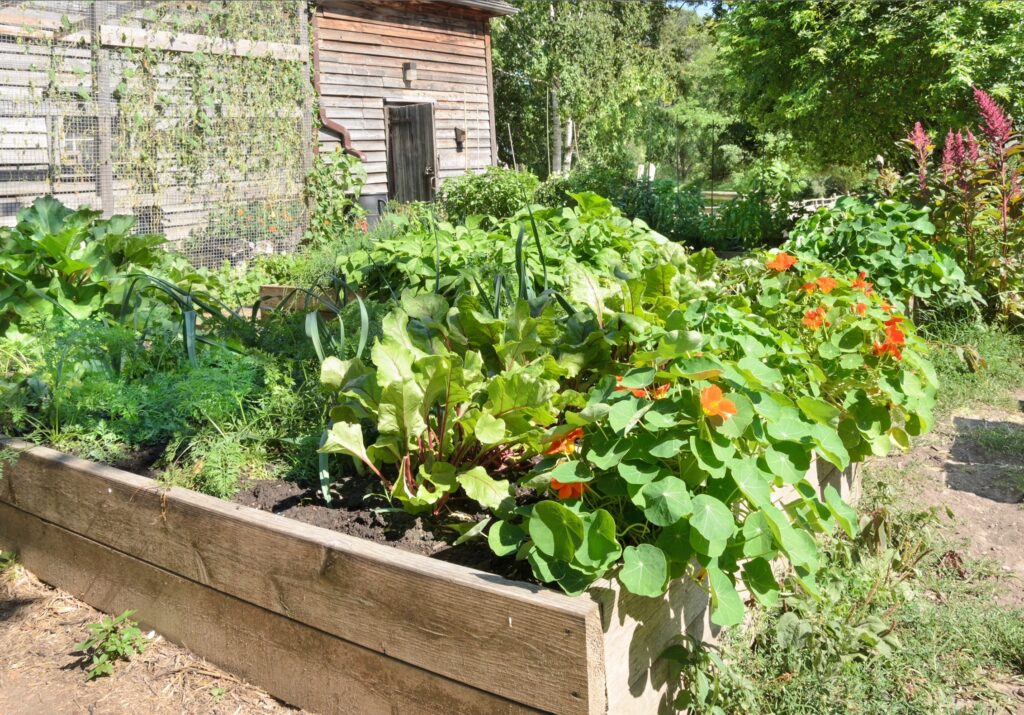
Raised beds pros and cons
- Con: requires more soil
- Con: higher initial cost
- Con: some pests are more challenging to control
- Con: can’t be moved or relocated easily
- Pro: less costly and labor-intensive as you don’t have to replace the soil each year
- Pro: easy to trellis for climbing plants
- Pro: less runoff
- Pro: less watering
Container garden pros and cons
- Con: may limit root growth or become root-bound
- Con: more frequent need to transplant
- Con: requires more water and nutrients
- Con: more labor-intensive to keep plants healthy
- Pro: can be moved easily
- Pro: transplanting is a snap
- Pro: grow a variety of plants with different needs
- Pro: easy to deal with pest or disease problems
Ultimately, the decision to plant a container garden or raised bed will be clear to you based on your goals, available space, and the time you can allocate to the task.
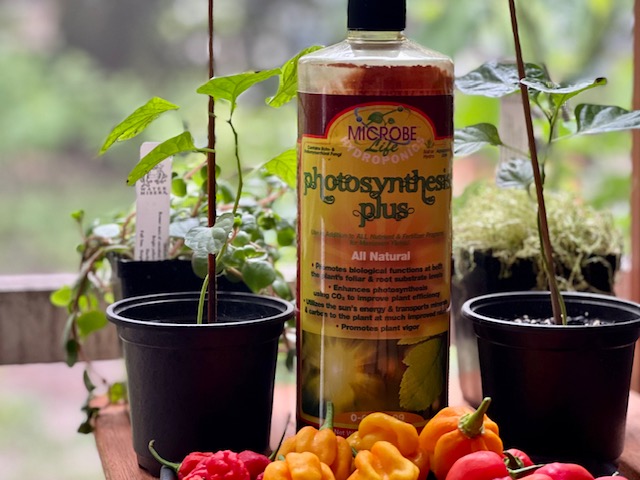
Improving Soil and Plant Biology with Photosynthesis Plus
To maximize enjoyment and results from your raised beds and container gardens, you need to create a healthy environment for your plants to grow and develop. Products like Microbe Life Photosynthesis Plus help enhance the plants’ ability to utilize available light and improve nutrient uptake, resulting in healthier growth and more abundant yields.
Photosynthesis Plus is a microbe-based solution that fixes nitrogen through the foliar and root zones. As beneficial bacteria establish around the roots and soil, it helps protect the roots, improve aeration, and keep the nutrients in the root zone, making them more available to the plants. You’ll use less fertilizer, and it helps the plant use available resources (sunlight and nutrients in the soil) more efficiently, resulting in healthy, vigorous growth with less effort on your part.
Plus, it’s all-natural, better for the environment and you—a significant concern when growing vegetables at home.
At a glance, here are the benefits of using Photosynthesis Plus:
- Increases nutrient uptake
- Reduces the need for additional fertilizer
- Better utilization of light for increased photosynthesis
- Supports plant root and vegetative growth, resulting in higher yields
- Improves water retention
You can purchase Microbe Life Photosynthesis Plus from Amazon here.
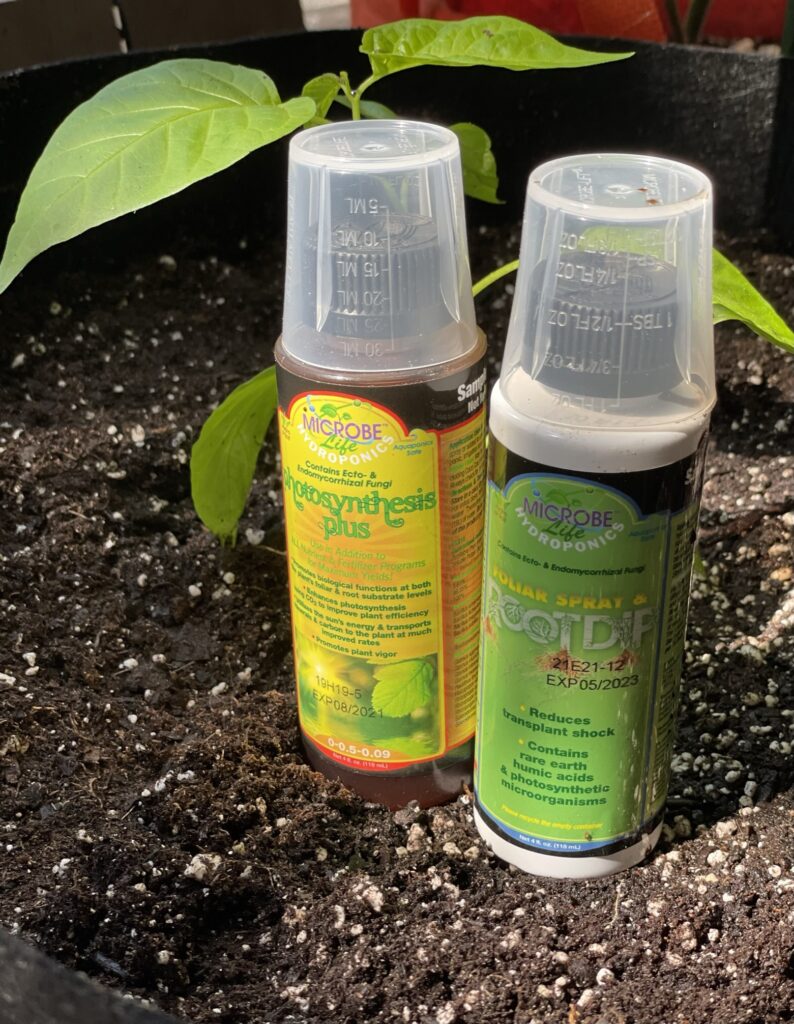
Increase Success with Root Dip
Microbe Life Root Dip is a supplemental treatment to use with Photosynthesis Plus, further helping to nourish your container gardens and raised beds with highly concentrated photosynthetic cultures, rare earth humates, and other elements to support optimal plant biology.
Root Dip can be used as a foliar spray, root dip, or root drench at every stage of plant development. You can use it when starting your seeds, to strengthen roots, or when transplanting to ensure success.
It’s specifically designed to stimulate root production, but you can use it any time during a plant’s lifecycle when you need to build up or repair the root system. If you’re transplanting into a new container, give those roots a good soak in Root Dip to reduce shock. Or, if you have a plant that’s had some issues with disease, or even if it just needs a little boost, Root Dip will help get it back on track and on the road to health quickly.
Like most Microbe Life products, there are no hormones or chemicals in the Root Dip formulation—just good bacteria there to naturally stimulate the plant to produce healthy roots.
Using these products creates a healthy environment in your container gardens and raised bed gardens; essentially, you’re giving your plants a good place to grow and reach their full potential—much like you’d want to do for your children!
Purchase Root Dip from Amazon here.
Photosynthesis & Root Dip enhances plant growth, and vigor.
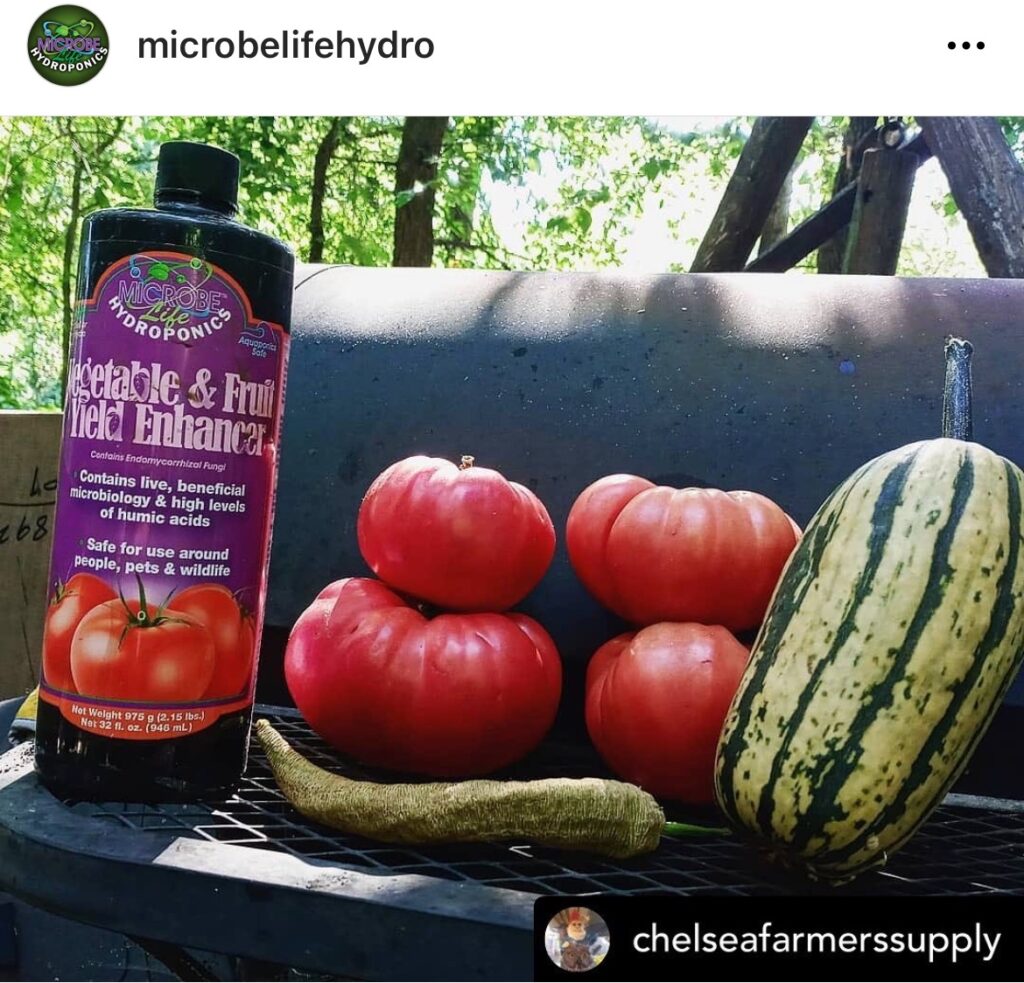
Enhancing Your Yield with Vegetable and Fruit Yield Enhancer
Vegetable and Fruit Yield Enhancer increases yields by helping plants utilize nutrients more efficiently. Like other Microbe Life products, it is an all-natural formulation containing microbes and photosynthetic cultures designed to improve soil quality and enhance growth. Yield Enhancer is safe to use in container gardens and raised beds and will not harm humans, pets, or wildlife.
Whether you’re growing flowers, fruits, or vegetables, using Yield Enhancer is easy, and you can look forward to healthier plants, speedy growth, and an abundant crop. As a bonus, Yield Enhancer improves water retention, meaning your plants will grow more with less water.
Purchase Vegetable and Fruit Yield Enhancer from Amazon here.
Final Thoughts on Container and Raised Bed Gardening
Probably the biggest takeaway from the information shared today should be that container and raised bed gardens are a way for anybody, anywhere, to get growing. It doesn’t matter what kind of soil you have (or lack) in your yard, you can grow your own healthy fruits, vegetables, and flowers in abundance.
With minimal construction, a little DIY creativity, and some expert help from Microbe Life products, the stuff you grow in your raised beds and container gardens will be the envy of the neighborhood—we guarantee it!
For more information on our products, browse our website and purchase Root Dip, Photosynthesis Plus, and Vegetable and Fruit Yield Enhancer from Amazon. Happy gardening!
